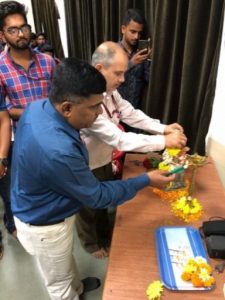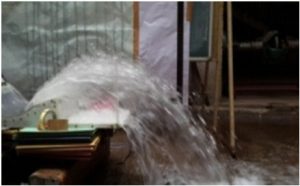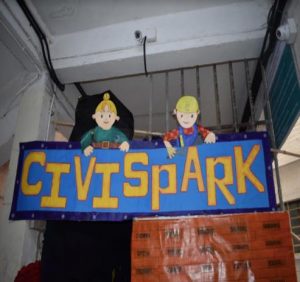Innovations by the Faculty in Teaching and Learning
Goals:
In order to improve students’ teaching experience aside from traditional classroom teaching, the department uses novel concepts and their subsequent execution by means of quantifiable programmes with following goals:
The department will continuously strive to:
- Enrich student learning by innovative practices.
- Develop students’ comprehension and expertise of creative methods and strategies.
- Broaden students’ perspective of emerging technologies and tools in academics, contemporary and social issues by innovative strategies.
- Motivate students to innovatively think, formulate and perform through different club activities.
List of initiatives in teaching and learning process followed by the department:
Every faculty member, knowingly or unknowingly, employs innovative practices to improve teaching. Every faculty member, whether consciously or unconsciously, employs new techniques to improve every student’s teaching-learning experience and help them understand the concepts throughout the year. The following is a list of some of the department faculty’s notable initiatives. However, it should not be regarded as a definitive list; rather, it should be regarded as a step in a continuous process of improvement.
1. Student Chapter activities:
The department has the following four professional student chapters, which provide a good platform for students to participate actively in the various competitions and lectures. Student chapter activities include guest lectures, quiz competitions, debate competition, soft skill lectures, and celebrations of Teachers day, Engineers day, Guru pournima etc. Each student chapter has one faculty advisor for mentoring, guidance, and overall governance.
List of student chapter
| Sr. No. | Student chapter | Faculty Advisor |
|---|---|---|
| 1 | IEI Student Chapter | Prof. M S Chiwande |
| 2 | ISTE student chapter | |
| 3 | IGS student chapter | |
| 4 | IWWA students chapter |
Prof. P R Modak |



2. Virtual labs/Google Classrooms/MS teams:
Some relevant experiments are carried out online with the assistance of simulators. Such online resources are known as virtual labs, and they are part of an excellent innovative initiative spear headed by India’s Ministry of Human Resource Development. During the pandemic, staff and students effectively used virtual labs to conduct practical classes. During the pandemic period, staff members and students have effectively utilized Google classrooms and Microsoft Teams for conduction of theory and practical classes, sharing of learning material and assignments submission.
Outcome: Improve students’ understanding and learning
3. Working models/Knowledge wall:
Faculty members use models to increase students’ interest and level of learning. The main goal of this is to engage students in an active learning environment. Every professor has created a knowledge wall for their subject. The knowledge wall was put in various locations throughout the department to increase student learning interest.


*Photograph of model of roller bucket energy dissipater in fluid mechanics lab*
Outcome: Subject knowledge enhancement
4. Use of Animations/PPT/CASE studies:
In order to boost students’ interest and level of learning, professors in certain subjects use animations, PPT and CASE studies. The major objective is to spark students’ attention and strengthen their knowledge.
Outcome: Students can gain a better understanding of the concepts.
5. E content on YouTube:
Some Faculty members have also created their own YouTube channels where they post study materials for their specific subjects. The links are distributed to the students, and the content is available to all.

* Snap of YouTube channel of Dr P B Nangare * (https://www.youtube.com/channel/UCY8DnPNxrSVpmH5jTypBAAQ)

* Snap of YouTube channel of Dr S R Parekar *
(https://youtube.com/c/EngineersTechnicalHubSP)
Outcome: It contributes to students’ knowledge and opportunity for self-study.
6. Project Based Learning:
PBL has been introduced for SE students with the goal of motivating students to learn by working cooperatively in groups to solve a problem. PBL is a student-centered pedagogy that employs a dynamic classroom approach in which students are believed to gain a deeper understanding through active exploration of real-world challenges and problems. Students gain knowledge about a subject by investigating and responding to a complex question, challenge, or problem over time. It is an inquiry-based and active learning style. Problem-based learning will also alter the role of the teacher as a mentor in the learning process.
Outcome: Students can complete projects and develop expertise of creative methods.
7. Students Symposium:
In September or October of each year, the department hosts Engineering Today (CIVISPARK), an annual national level student symposium, to encourage students to organize and participate in various events to improve their skills. This is platform where events like paper presentations, poster presentations, quiz competitions etc. are organized. Engineering Today is a technical event hosted by the AISSMS College of Engineering that began in 2006. The primary goal of Engineering Today is to work to improve students’ technical knowledge while also providing them with exposure to the technical world through participation in various technical events. The Department of Civil Engineering hosts Engineering Today as CIVISPARK each year, with a different theme. All of the department’s students worked hard to represent the same through meaningful captions and models. Students’ efforts drew the attention of guests and visitors. Furthermore, on the final day of Engineering, the institute hosts science exhibitions where SE and TE students prepare models, as well as students from neighboring schools, are allow to view models.



* Glimpses of Engineering Today (CIVISPARK) *
Outcome: Improving skills so that they can participate in more events.
8. Cutting-edge initiative :
Today’s education system is rapidly evolving in order to introduce new teaching techniques and strategies that promote a culture of diversity and inclusion. Similarly, each teacher has a distinct teaching style. However, all teachers have the same goal: to instil a love of learning in their students. Department have a few Cutting-edge initiative as given below that use modern technology
- Avishkar
- Hackathon
- Ideathon
- National innovation context
- Startup & Innovation cell
- Unnat Bharat Abhiyan cell
Outcome: Using Cutting-edge initiative, students’ problem-solving and innovative thinking abilities are improved, and their perspectives on emerging technologies and tools in academics, contemporary and social issues are broadened.
9. Industry Institute Inter reaction:
Improving interaction between institute and industry is essential in today’s world, and it provides a good platform for innovative teaching. The goal of industry-institute interaction is to improve the quality of technical education to meet the needs of the industry. Industry Institute Interaction improves teaching-learning processes, raises student awareness of the industry environment, provides practical knowledge to students, and develops students self-confidence to become entrepreneurs. The department has an Industry Institute Interaction Cell (I3) that organizes activities throughout the year. The primary goal of the I3 cell is to prepare industry-ready engineers. Students are trained in a variety of skills through hands-on guest lectures, site visits, internships, and other activities. In addition, the department signed Memorandums of Understanding (MoUs) with a number of companies. Students can gain industrial knowledge through this collaboration.


Glimpse of Hackathon
Outcome:Provides a platform for students to learn about industry expectations
10. NPTEL- SWAYAM:
SWAYAM is a programme launched by the Indian government to achieve three cardinal principles of education policy: access, equity, and quality. This efforts goal is to provide the innovative teaching and learning resources to everyone. Students can enroll in a variety of NPTEL courses online. In department Students are encouraged to enroll NPTEL course. The faculty constantly guides and mentors the students in completing NPTEL course. Students complete the course by watching video lectures.
Outcome: It helps students’ knowledge and self-learning.
Very good practices are followed by civil department…. Teaching learning methods are very innovative
Best session ever… helpful in my day to day life ????
All Good
Good initiatives from the Civil department to improve our experience at college.
Excellent Draft… Really appreciable practices to develop the students.
I would like to suggest that students who wish to continue their future by pursuing higher studies. Please encourage them to work on structural projects with STAAD, BIM model and Revet.
Recommend students to work on projects using STAAD models. This can be incorporated while educating them while ongoing Structural Analysis & Design coursework.